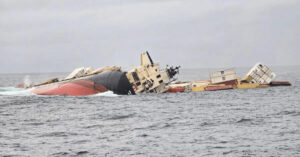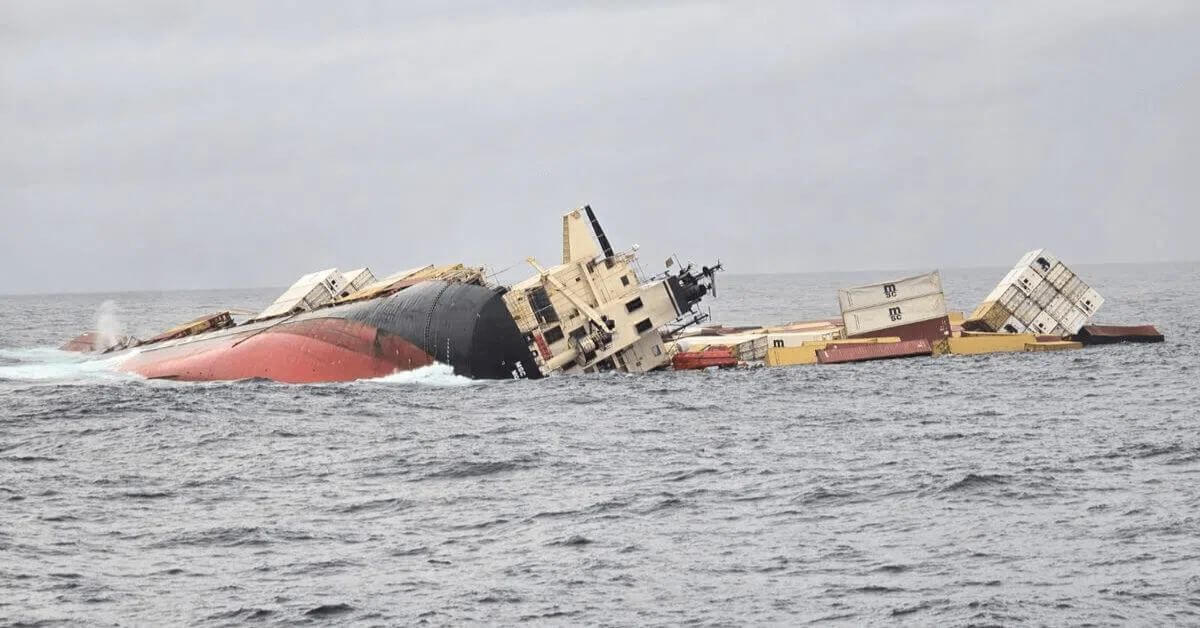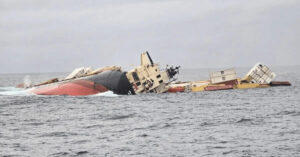
Video: China’s Most Advanced Carrier Fujian Carries Out Catapult Launches For The First Time
September 23, 2025
Historic Royal Navy Frigate To Sail 6,000 Miles From Pakistan To Clyde As Floating Museum
September 23, 2025

The sinking of the Liberian-flagged container ship MSC Elsa 3 off the Kerala coast on May 25, 2025, has caused significant ecological disruption in the southeastern Arabian Sea, a study by the Centre for Marine Living Resources and Ecology (CMLRE), under the Ministry of Earth Sciences, has confirmed.
The 28-year-old vessel, travelling from Vizhinjam port in Thiruvananthapuram to Kochi, capsized about 25 km southwest of Alappuzha. All crew members were rescued safely by the Indian Coast Guard and Navy. Experts say the wreck is now a continuing source of hydrocarbon and heavy-metal pollution.
A research survey aboard the Fishery Oceanographic Research Vessel (FORV) Sagar Sampada, conducted from June 2 to June 12, surveyed 23 locations between Kochi and Kanyakumari, with detailed observations near the wreck site, located at a depth of 54 metres.
Scientists found several polyaromatic hydrocarbons (PAHs) such as naphthalene, fluorene, anthracene, phenanthrene, fluoranthene, and pyrene. High levels of naphthalene, usually caused by human activity, suggest leakage from the ship’s fuel compartments.
The study also detected higher concentrations of trace metals in both water and sediments, including nickel, lead, copper, and vanadium, which are commonly associated with petroleum products. These findings confirm that the wreck has become a local source of oil and heavy-metal pollution.
Marine life has been badly affected. Fish eggs and larvae collected from the affected waters showed signs of decay, suggesting mortality during their most vulnerable stages. On the seabed, sensitive benthic organisms declined sharply within days, leaving behind only pollution-tolerant worms and bivalves. This indicates severe ecological stress with potential long-term effects on sediments and fisheries.
Zooplankton samples revealed high levels of petroleum-derived pollutants, confirming bio-accumulation and raising concerns about the transfer of toxic substances through the food chain to fish and humans.
Higher marine fauna were also impacted. A Brown Noddy seabird (Anous stolidus) was observed taking prolonged shelter on the wreck, repeatedly preening its feathers, a classic behavioral response to oil contamination. Such observations indicate the vulnerability of birds and other marine organisms exposed to the spill.
Despite strong currents, oil from the wreck remained visible weeks after sinking, showing ongoing leakage. Experts stress the urgent need to seal the fuel compartments and monitor the area long-term to protect Kerala’s marine ecosystems and fisheries.
The CMLRE report is the first authoritative confirmation of toxic leaks from the wreck, highlighting the need for immediate remedial action to prevent further damage to marine life and local fishing communities.
References: The Hindu, downtoearth
Source: Maritime Shipping News


